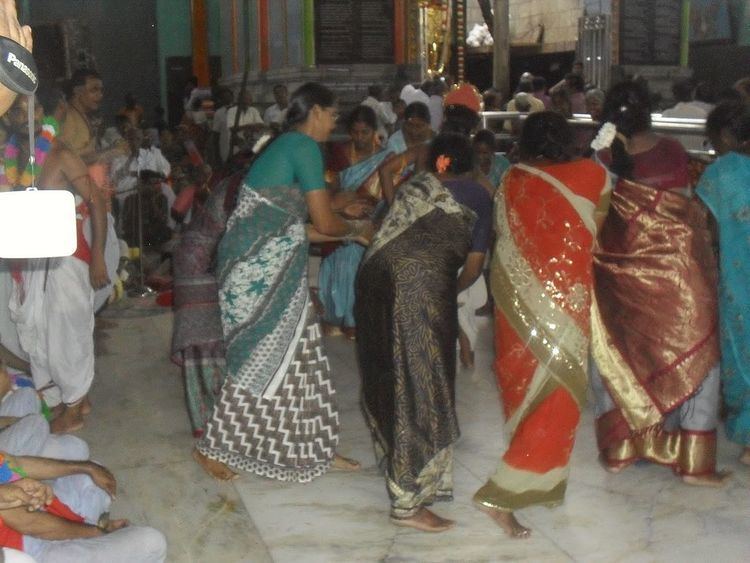 | ||
Folk dances of Sourashtra: Folk dance is a form of dance developed by a group of people, that reflects the traditional life of the people of a certain Country or region. Folk dances no stringent rules, and sometimes formed among group of people. The steps of folk dance are passed through generations, rarely being changed. Sourashtra community people living in Tamil Nadu performing three folk dances in various occasions. The Gebbi or GebbEL, Konangi and DaNdi natana (kolaNe).
Contents
Gebbi
(Devanagari : गेब्बी ) This dance was performed usually group of women on various religious occasion with Devotional (Bhakthi) Songs. This dance goes around a lamp called " Thandili Diva" and in before of Statue of Gods, Goddesses's Idol or Picture. The circular and spiral movements with clap of hands makes this dance. Gebbi performances often includes a Singers in same dance group or a separate Singer. Gebbi is the word derived from Garba-graha is the symbol of Shakthi. The outer worlds symbolic identification is a pure water filled pot. In this water, God, Godless called to reside temporarily for blessing. The basic dance formation is that of a circle that moves counterclockwise; if space is constrained or there are many participants, dancers form concentric circles that move in opposite directions. Ultimately, the performers circle around an image of a mother goddess, such as Amba, or around a symbolic representation of her creative energy—often an illuminated clay pot or a water-filled vessel. Dancing begins slowly and gradually increases in speed.
Konangi
(कोनंगी ) This is a Jesters dance performed by males. It takes Usually on Hindu festival called Ramanavami. This dance formed as to narrate and preech the morals from the life of Lord Rama and Lord Krishna. This is a social dance which preaches good thoughts to society.
Birth of Konangi Dance
Based on Tale/ Leela of Lord Krishna's story..... After Demon King Kamsa's death, a Demon called Dantavakra taking oath to Kill Lord Krishna. He does not need any weapon to fight, because of his power and his terribly big-teeth is his only dangerous weapon. Demon Dantavakra fought with his terrifying big teeth with Lord Krishna, and caught Lord Krishna's Chakra-weapon with his big teeth; when Krishna throwed to kill him.
The demon Dantavakra is not able to open his mouth to release the Chakra; because if he open his mouth and loosen the Chakra, the rotating chakra will cut his mouth. So he keep on stand for a long time with tightly bitten Chakra by his big teeth. Though this inactive state/pose of demon is advantage to Lord Krishna to kill him easily, But Lord Krishna wished and make a trick-plan to open his mouth. Neither Lord Krishna wishes to Touch him nor to harm with his hand. Lord Krishna wishes that the demon killed only with his Chakra.
Meanwhile already Lord Krishna felt bliss with Demons helpless pose Lord Krishna started to dance with humorous movement. ON seeing humorous dance movement, the demon Dantavakra not able to control from laughter. Demon started to laugh, then the Chakra-weapon cuts his mouth and killed. From this incident the Folk dance called 'Konangi' was born. This dance called 'Konangi'; take birth from Lord Krishna's Dance. Konangi also called as The folk dance of Sourashtra people.
According to Bhagavatha Purana "Dantavakra was formerly Dwara palaka Jaya and Vijaya of Vaikunda. This TV Serial Shows why Jaya and Vijaya became demons as Hrinayaksh and Hiranya kasipu, Ravan and Kumabakarna, and Dantavakra and Sisupala. The evidence of Konangi folk dance spread over puranas and bhagavatham."
Dandi natana (kOlaNe)
( दांडी नटना ) Dandi natana is a stick dance which is also performed in circular and spiral movement by tapping the stick on the opposite side dancers. It had multiplication of performers like Two, Four, Eight, Sixteen onwards.
See also
Sourashtra language
